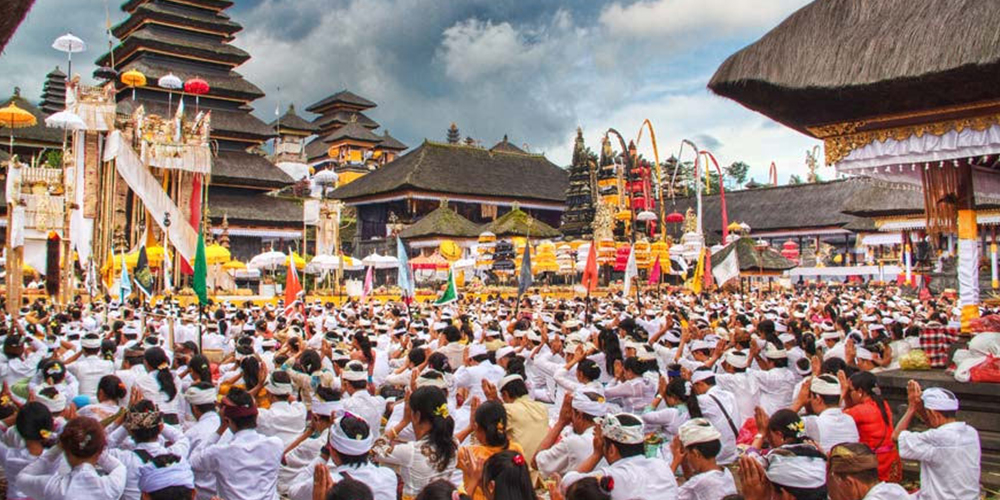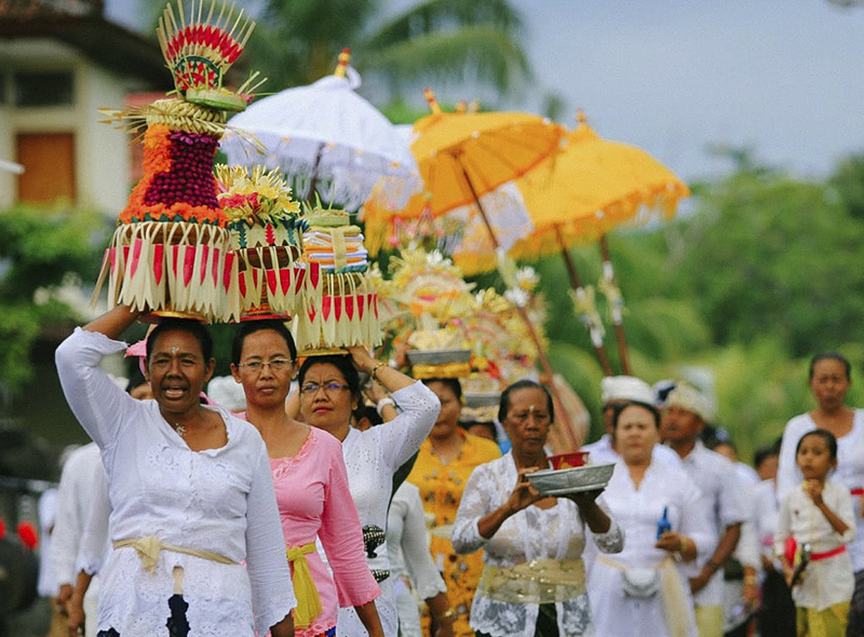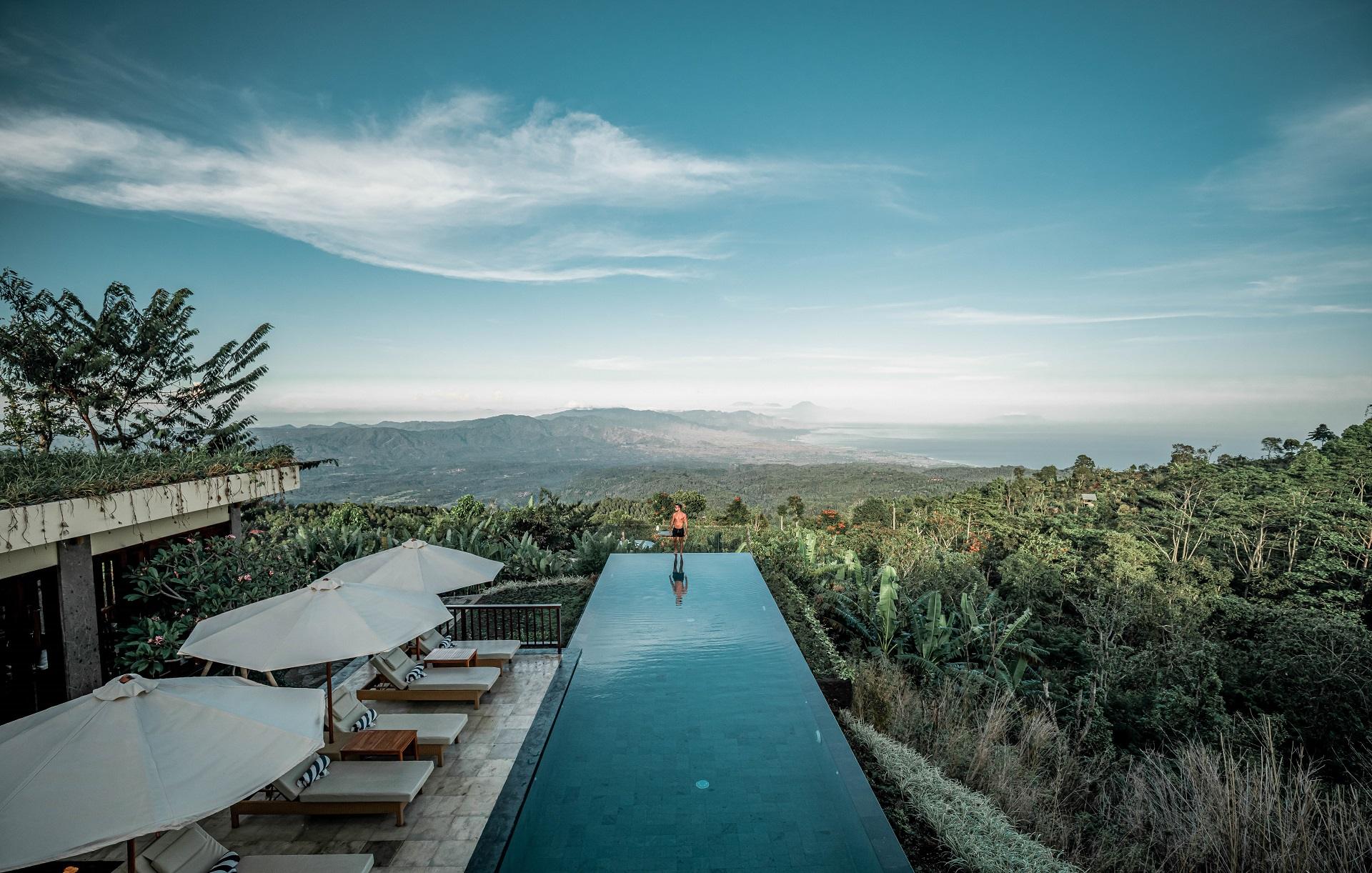In Bali, the full moon is far more than just a beautiful phase in the sky—it is a celestial event deeply rooted in Balinese Hindu tradition, marking one of the most important and spiritually charged times in the island’s sacred calendar. Known as “Purnama”, the full moon is believed to carry potent energy that opens a stronger connection between humans, nature, and the divine.
On this night, the island transforms into a living temple—offerings multiply, temples glow with candlelight, and villagers don ceremonial white and yellow attire as they gather to pray. It is a time for purification, gratitude, and balance—where both locals and spiritually curious visitors are invited to reflect and connect. 🌕🕯️
🌺 What is Purnama? The Meaning Behind the Full Moon in Balinese Belief

“Purnama” translates to “perfect moon,” and in Balinese culture, it symbolizes a time when the cosmic forces are at their most powerful. The full moon is considered a blessing from the gods—a time of high energy and heightened clarity, perfect for ceremonies, purification rituals, and spiritual renewal.
During Purnama, Balinese Hindus believe that the gods descend to the earth to bless humanity. To welcome them, people perform rituals called “pujawali” at temples, create special offerings with flowers, fruits, and incense, and conduct prayers that align body and spirit with the energy of the universe. Every full moon, hundreds of temples across the island come alive with community activity, with sacred chants and Gamelan music echoing into the night.
This lunar celebration happens 12–13 times a year, each one just as important as the last. Certain Purnama dates—such as Purnama Kapat (the fourth full moon of the Balinese calendar)—are particularly sacred and celebrated with large-scale processions, elaborate rituals, and temple anniversaries.
It’s a time when the island slows down to recenter itself spiritually, and even visitors can feel the shift in atmosphere—more tranquil, more connected, more alive.
🛕 What Happens During a Purnama Ceremony?

On the evening of a full moon, temple courtyards are adorned with towering penjor (bamboo poles), intricate offerings, and oil lamps. Families dress in traditional temple attire—white kebaya and sarong for women, white shirts and udeng headcloths for men—and gather at village temples, sea temples, and mountaintop shrines alike.
Offerings, known as banten, are specially prepared for Purnama. These include colorful flower arrangements, rice cakes, betel leaves, and sometimes even miniature shadow puppets to represent the deities being honored. Rituals begin with prayers led by a pemangku (temple priest), followed by blessings of holy water and rice, applied to the forehead as a symbol of spiritual purification.
During major ceremonies, you’ll witness traditional dance performances like Rejang or Baris, offered as sacred entertainment to the gods. The air becomes thick with incense and devotion, and even as an observer, it’s impossible not to feel the sacred energy that fills the space.
Locals also use this time for personal purification. It’s common to see people visit water temples or sacred springs earlier in the day for Melukat, a cleansing ritual to rid the self of spiritual impurities and emotional burdens—an essential part of the Purnama experience.
👣 How to Experience Purnama as a Traveler (Respectfully)

Purnama offers travelers a rare opportunity to witness authentic spiritual practice—not as a performance, but as a genuine act of community devotion. Many temple ceremonies are open to respectful visitors, especially in Ubud, Gianyar, and eastern Bali where traditions run deep.
If you wish to attend a ceremony, dress appropriately—wear a sarong, sash, and modest clothing that covers your shoulders and knees. Most temples will lend or rent attire at the entrance, and local guides or your hotel staff can help arrange a visit. Be quiet, observe from a respectful distance, and never interrupt or walk in front of someone praying.
While photography is usually allowed, always ask before taking pictures, especially during private rituals or in smaller village temples. It’s often more meaningful to put the camera down and simply be present.
Some wellness retreats and resorts—such as The Kayon Jungle Resort, Capella Ubud, or Floating Leaf Eco-Retreat—offer guided experiences that include attending a Purnama ceremony, followed by meditation, journaling, or traditional Balinese blessings. It’s a powerful way to align your journey with the island’s deeper spiritual pulse.
🏨 Where to Stay for a Spiritual Purnama Experience

✔️ Capella Ubud – Set deep in the jungle near sacred sites and temples, this ultra-luxury tented retreat offers curated spiritual excursions.
✔️ The Kayon Jungle Resort – Blends luxury with deep-rooted Balinese tradition, offering guests access to nearby ceremonies and wellness rituals.
✔️ Munduk Moding Plantation – A serene mountain hideaway ideal for reflective full moon nights and nature immersion.
✔️ Floating Leaf Eco-Luxury Retreat – A wellness retreat with cultural programs, including full moon ceremonies, yoga, and purification rituals.
To witness or participate in a Purnama ceremony is to experience the heartbeat of Balinese spirituality. It’s a reminder that the moon above is not just a light in the sky, but a sacred marker of time, ritual, and inner reflection. For the Balinese, each full moon is a chance to start fresh, reconnect with the divine, and give thanks for life’s blessings.
As a traveler, entering this sacred space—mindfully and respectfully—can transform your perception of Bali. You’re no longer just visiting a destination; you’re tapping into a living culture that breathes through prayer, ritual, and cosmic awareness.
📸 Follow us for more Balinese spiritual traditions and cultural experiences: @baliexpertguide